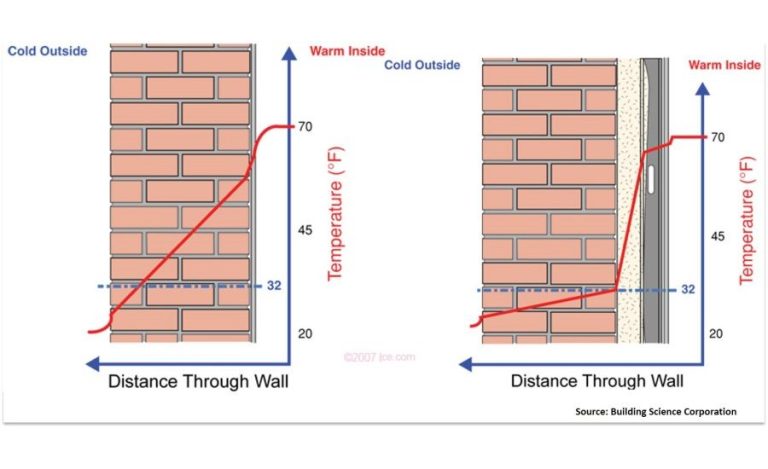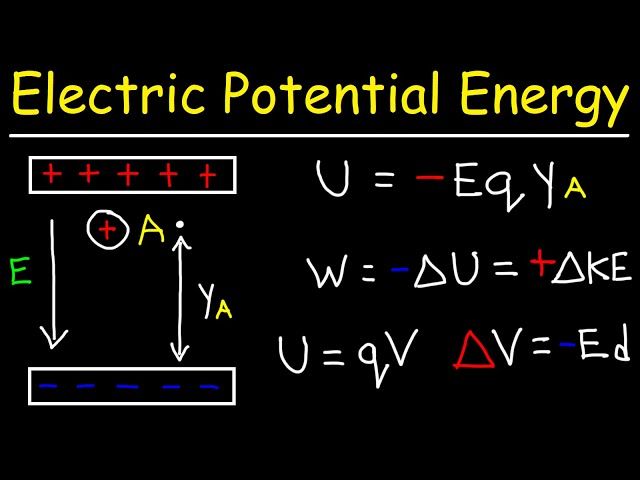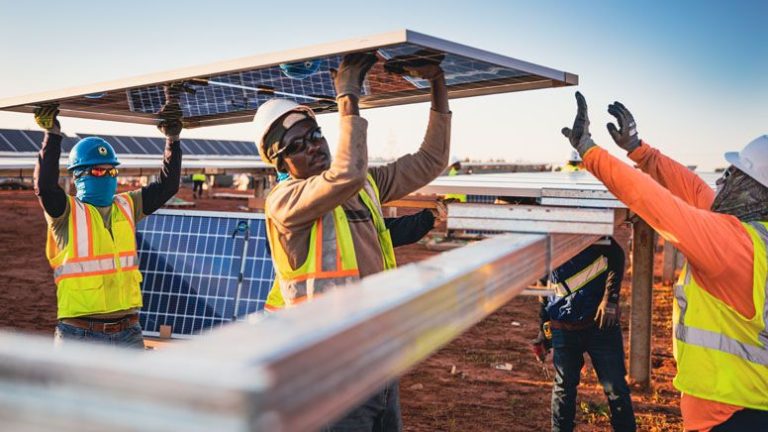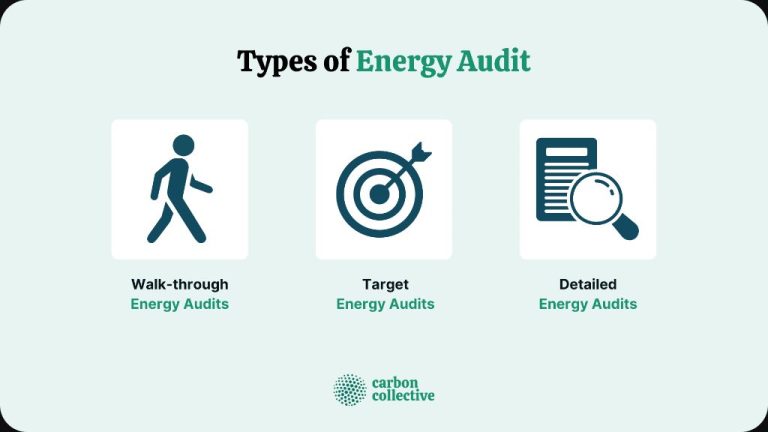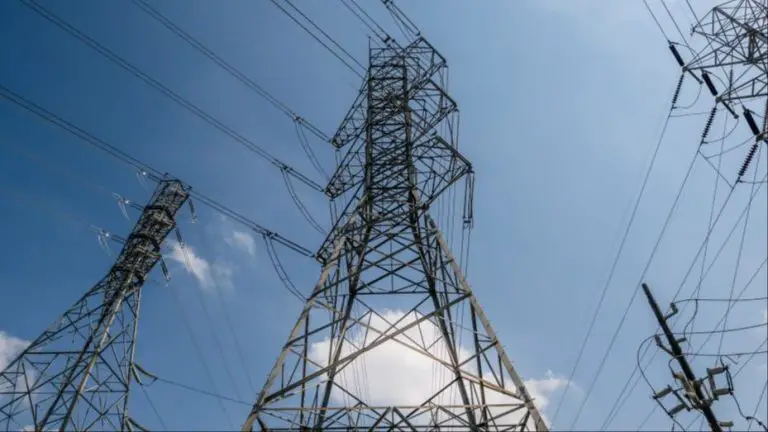What Is A Defining Characteristic Of Energy?
Introduction
Energy is the ability to do work or produce change. It is a fundamental and pervasive concept that underlies the workings of nature and human society. From sunlight to fossil fuels, energy comes in a variety of forms that can be converted and used for work, heating, electricity generation and much more. Having access to abundant, affordable and sustainable energy sources is essential for modern civilization. Energy powers industry, agriculture, transportation and communications. It enables conveniences like artificial lighting, computers and mobile technology that have transformed how we live and work. The way societies produce, distribute and consume energy has profound economic, political and environmental impacts. Developing clean energy solutions is crucial to mitigating issues like pollution and climate change while lifting millions out of poverty through energy access. Understanding the nature of energy—how to measure, store, transfer and efficiently use it—is key for innovation and progress.
Potential vs Kinetic Energy
Energy comes in two main forms: potential energy and kinetic energy. Potential energy is stored energy that an object has due to its position or state. For example, a ball held at the top of a ramp has potential energy due to gravity. As the ball rolls down the ramp, this potential energy gets converted into kinetic energy, which is the energy of motion. The faster the ball rolls, the more kinetic energy it has.
Other examples of potential energy include chemical energy stored in batteries, electrical energy stored in capacitors, nuclear energy stored in the nuclei of atoms, and elastic potential energy stored in stretched springs. This potential energy can be readily converted into kinetic energy. Understanding the difference between potential and kinetic energy is key to comprehending how energy flows and changes form in the physical world.
Energy Transformation
Energy can exist in various forms such as mechanical, chemical, thermal, electrical, and more. Energy transformation refers to the process of changing energy from one form to another. A key principle governing energy transformations is the law of conservation of energy.
The law of conservation of energy states that energy can neither be created nor destroyed, only transformed from one form to another. For example, when gasoline is burned in a car engine, chemical energy stored in the gasoline’s molecular bonds is converted into heat and kinetic energy that propels the car. The total amount of energy before and after the transformation remains constant.
Some common energy transformations include:
- Chemical to thermal – Burning wood releases heat
- Chemical to kinetic – Batteries power electric motors
- Radiant to thermal – Solar panels convert sunlight to electricity
- Mechanical to electrical – Wind turbines transform kinetic wind energy into electricity
Energy transformations occur continuously all around us. Understanding the different forms energy can take and how it changes from one type to another allows us to utilize energy more efficiently in various applications.
Energy Storage
Energy can be stored for later use in a variety of ways. Some key forms of energy storage include:
Chemical
Chemical energy storage involves converting electrical energy into stored chemical energy within a reversible chemical reaction. Batteries are a common example, storing energy in chemicals like lead, lithium, and nickel metal hydride. The chemicals react to release electricity when needed. Fuel cells are another form of chemical energy storage.
Mechanical
Mechanical energy storage stores energy by using it to exert a force, tension, or torque on an object, and releasing that force later to drive mechanical work. Pumped hydro facilities store energy by pumping water uphill into an elevated reservoir, then releasing it through hydroelectric turbines when electricity is needed. Compressed air energy storage is another approach, compressing and storing air in underground caverns.
Thermal
Thermal energy storage allows storage of excess thermal energy for later use in heating and cooling applications. This can involve storing hot or cold substances like molten salt or ice, then using the thermal energy later for space heating/cooling, water heating, refrigeration, or industrial processes.
Electromagnetic
Electromagnetic energy storage takes electrical energy and stores it in magnetic fields. Inductors and superconducting magnetic coils allow storage of electricity by creating magnetic field storage. This storage method is reversible, allowing the magnetic energy to be converted back into electrical current.
Energy Sources
Energy comes from a variety of sources that can be categorized as renewable and nonrenewable. Renewable energy comes from sources that are naturally replenished like sunlight, wind, rain, tides, waves, and geothermal heat. Nonrenewable energy comes from sources that cannot be easily replenished like fossil fuels. Here is an overview of some key renewable and nonrenewable energy sources:
Renewable Energy Sources
Solar Energy – The sun provides a tremendous resource for generating clean and sustainable electricity using photovoltaic panels or concentrated solar power plants. Solar energy could meet all of humanity’s electricity needs if harnessed at scale.
Wind Energy – Air flow through wind turbines can be used to generate electricity. Wind power is now one of the cheapest sources of renewable energy.
Hydropower – Flowing water generates energy that can be captured by hydroelectric dams. It’s a reliable and flexible energy source already widely used globally.
Geothermal Energy – Subsurface heat from the earth can be used to generate steam to drive turbines and generate electricity.
Bioenergy – Biomass from plants and waste can be used to create transportation fuels and generate electricity.
Nonrenewable Energy Sources
Fossil Fuels (Coal, Oil, Natural Gas) – These carbon-rich fuels are extracted from underground deposits formed over millions of years. Burning fossil fuels emits greenhouse gases.
Nuclear Energy – Nuclear fission of radioactive elements like uranium creates large amounts of energy. However, it also generates radioactive waste.
Energy Use
Energy is used in nearly all aspects of modern life. Transportation, manufacturing, electricity, heating and cooling are some of the primary ways energy is consumed.
Transportation accounts for a large share of energy consumption. Most transportation relies on petroleum based fuels like gasoline and diesel to power cars, trucks, ships, trains and airplanes. Energy is needed to move people and goods from one place to another.
Electricity powers homes, businesses, industry and infrastructure. Major energy sources for electricity include coal, natural gas, nuclear, hydroelectric, wind and solar. Electricity runs lighting, appliances, electronics, manufacturing equipment and more.
Heating and cooling require energy to maintain comfortable temperatures in buildings. Natural gas, electricity, oil and renewable sources like solar thermal and geothermal heat pumps are used. Energy efficiency improvements like insulation, air sealing and high efficiency equipment can reduce heating and cooling needs.
Manufacturing converts raw materials into finished products using a range of processes that require high energy inputs. Petroleum, natural gas, coal and electricity supply the energy for manufacturing worldwide.
Energy Efficiency
Energy efficiency is the goal of reducing the amount of energy required to provide products and services. With rapid population growth and rising energy consumption, improving energy efficiency is crucial for a sustainable future.
There are many ways we can use energy more efficiently in our everyday lives:
-
Replace old appliances and electronics with ENERGY STAR certified models which meet strict energy efficiency guidelines set by the EPA.
-
Switch to LED lightbulbs which use at least 75% less energy and last longer than traditional incandescent bulbs.
-
Insulate your home properly and seal air leaks around windows and doors to prevent heat or cold air from escaping.
-
Set thermostats to 78°F in summer and 68°F in winter to reduce HVAC energy consumption.
-
Use public transportation, carpool, walk, or bike whenever possible to save gasoline.
-
Unplug devices when not in use to avoid phantom load power drain.
-
Wash clothes in cold water and air dry when possible to reduce clothes dryer usage.
With smart energy efficiency improvements, we can work towards a cleaner energy future while also saving money on utility bills.
Energy Access
Around 770 million people in the world do not have access to electricity. This issue of energy poverty disproportionately affects people in rural and remote areas of developing countries. Lack of electricity access impacts healthcare, education, agriculture, and economic growth. To address energy poverty, countries and organizations have implemented various solutions:
– Rural electrification programs expand centralized grid access to rural communities through infrastructure projects.
– Off-grid and mini-grid systems provide electric power separate from the centralized grid through renewable sources like solar panels.
– Microgrids connect small, localized groups of electricity users while remaining independent from the broader grid network.
– Energy efficient stoves and lighting reduce household energy consumption and costs.
– Community training programs empower locals to maintain and operate decentralized energy systems.
– Innovative financing through microloans and pay-as-you-go models spread costs over time.
– Partnerships between governments, development banks, NGOs, and private companies scale up energy access solutions.
Energy and Environment
The production and use of energy can have significant impacts on the environment. Fossil fuels like coal, oil and natural gas emit greenhouse gases like carbon dioxide when burned, contributing to climate change. Extracting and transporting fossil fuels also carries environmental risks like oil spills. Nuclear power produces radioactive waste that must be carefully stored. Hydroelectric dams flood valleys and disrupt ecosystems. Even renewable energy sources like wind turbines and solar panels can impact wildlife habitats.
However, transitioning to clean, renewable energy sources like wind, solar and hydropower could significantly reduce the environmental impacts of energy production. Improving energy efficiency in buildings, transportation and industry can also lower energy demand and greenhouse gas emissions. Additionally, technologies like carbon capture and storage may allow continued fossil fuel use with reduced emissions. Overall, managing energy’s environmental impacts will require a combination of deploying clean energy sources, improving efficiency, updating infrastructure and implementing new technologies across the energy system.
Conclusion
Energy is a ubiquitous characteristic of the natural world. To summarize the key points from this article:
– Energy exists in two main forms: potential and kinetic. Potential energy is stored energy while kinetic energy is energy in motion.
– Energy is constantly being transformed between different forms through processes like photosynthesis, combustion, electricity generation, and more.
– Fossil fuels, nuclear, solar, wind, hydroelectric, geothermal and biomass are all common energy sources that are utilized in various ways.
– More efficient use of energy helps conserve resources and reduce environmental impacts.
– Global access to modern energy services is still a challenge that needs to be addressed.
Gaining a deeper awareness of how we produce, consume and think about energy is hugely important as we work to build a more sustainable future. Energy powers our lives and civilization, so we must use it wisely.

